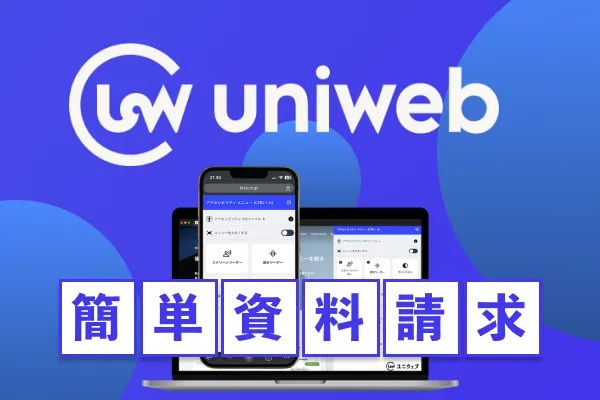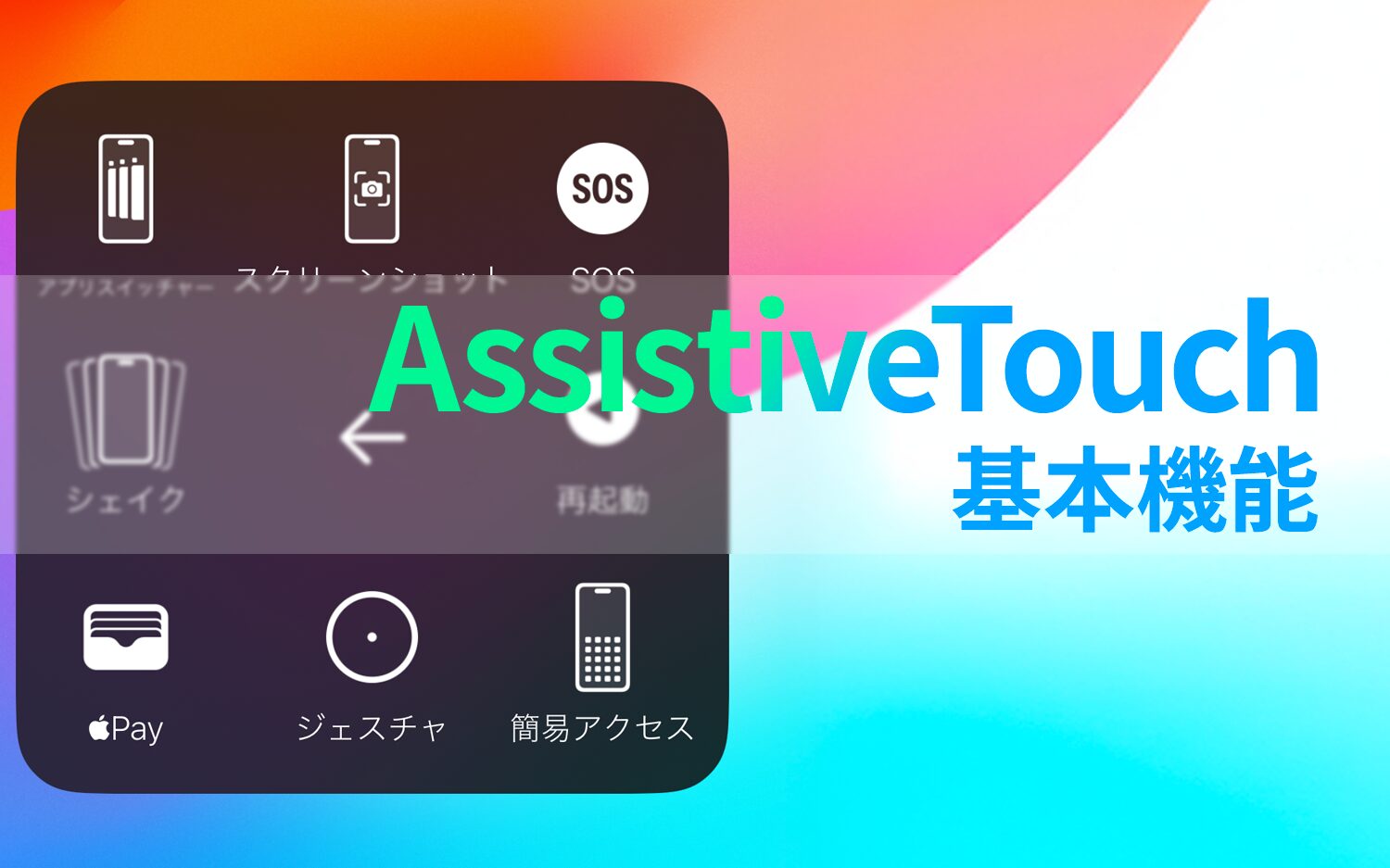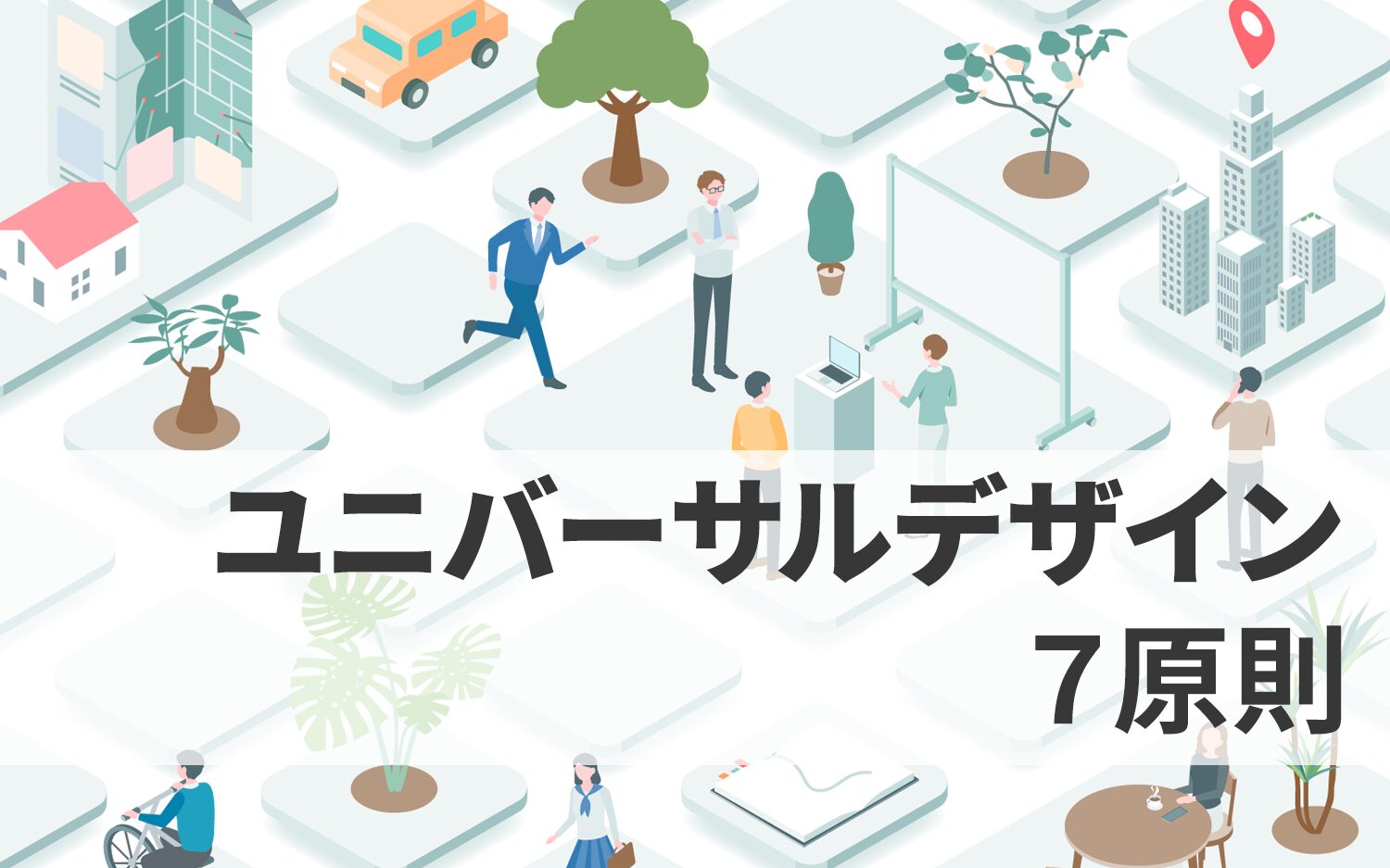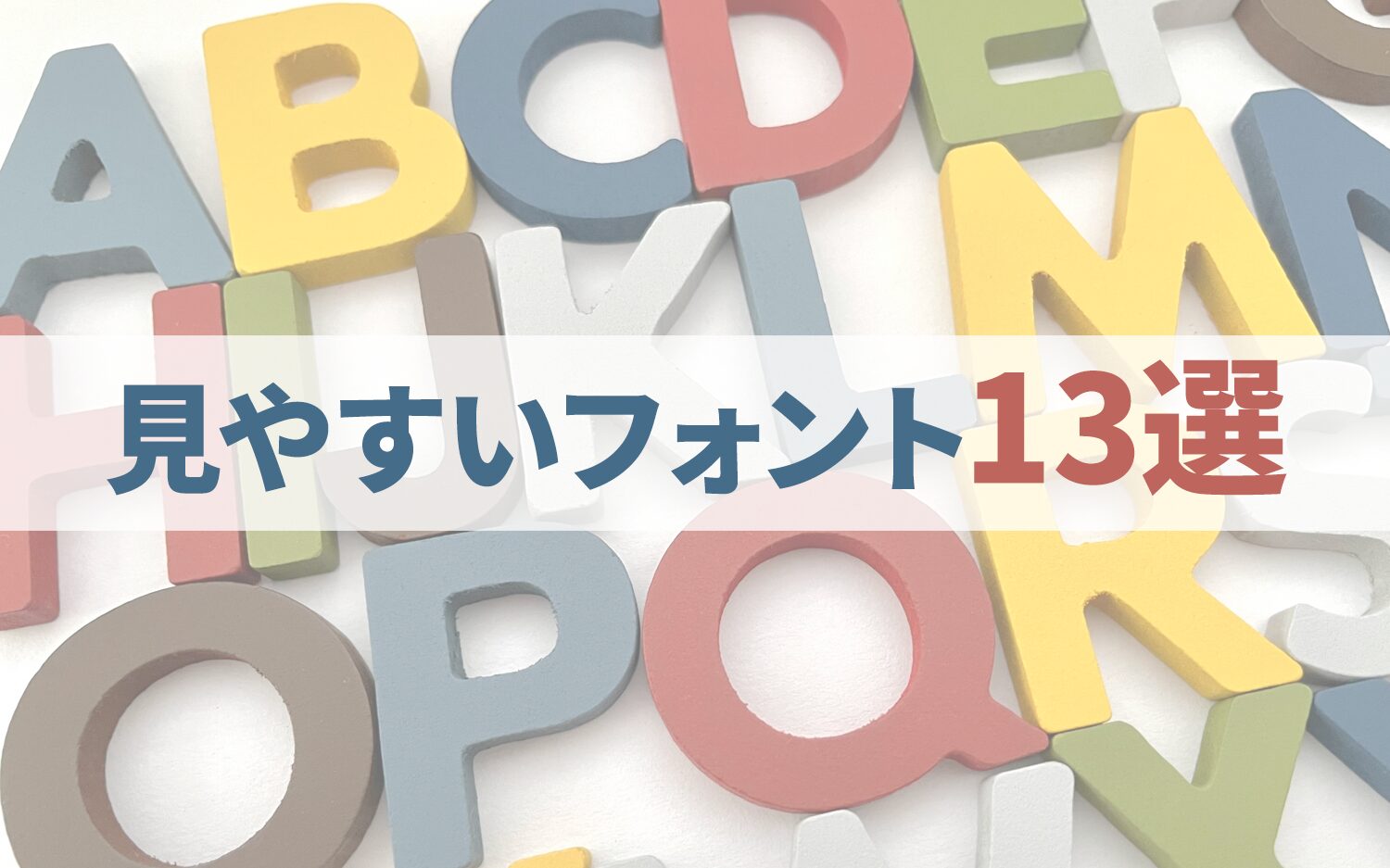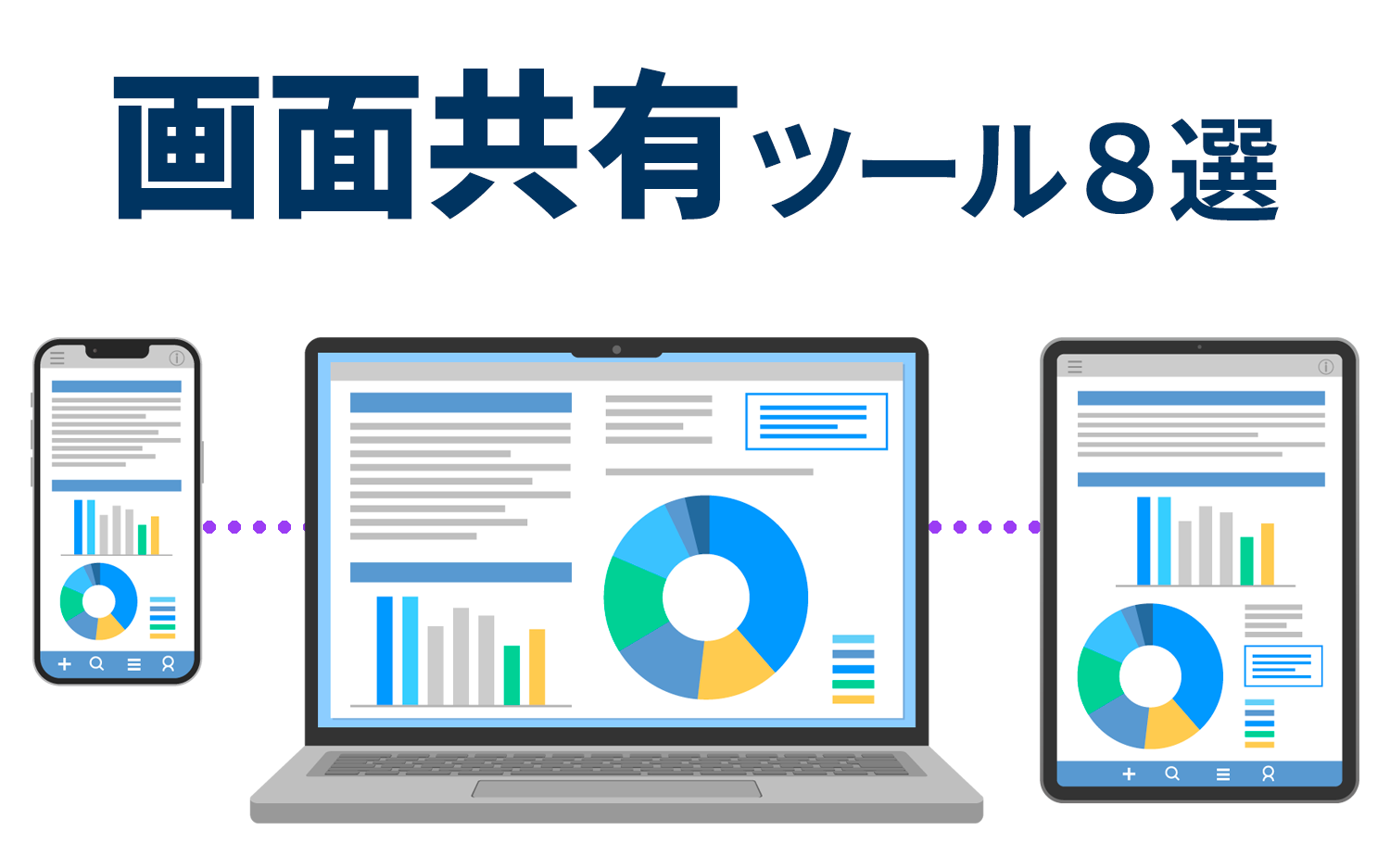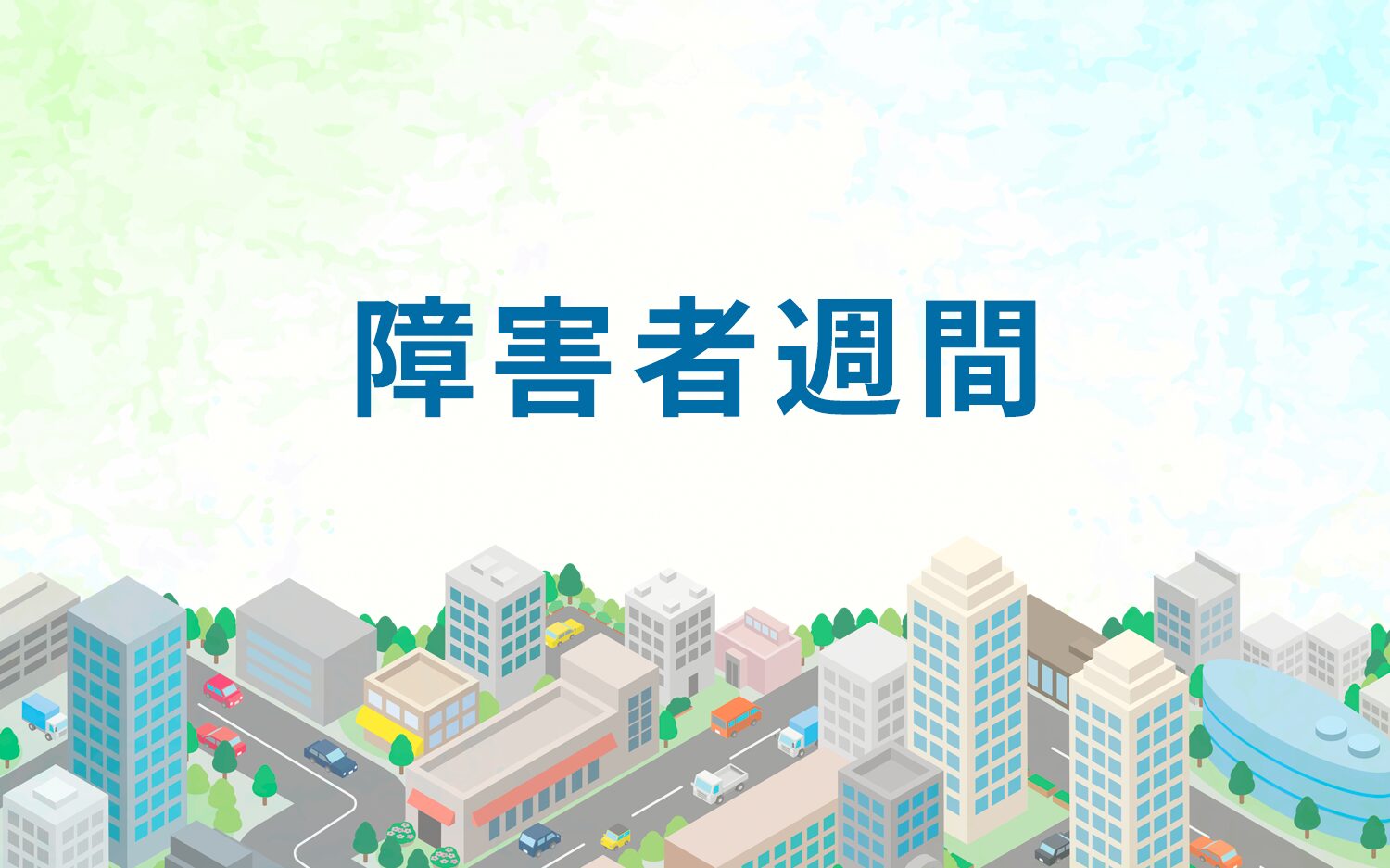The difference between barrier-free and universal design is the "design concept.
2025/02/24

Barrier-FreeとUniversal Designis an important concept for realizing a society in which everyone can live comfortably.
The two are often confused, but there are differences in purpose and approach; however, the most significant differences between barrier-free and universal design areThe Design Approach."Is here.
◆Differences between the concepts of barrier-free and universal design
Barrier-free: Designs that accommodate the disabled and elderly by removing certain barriers
Universal design: design that is easy for all people to use in common from the beginning.
And what is the ideal design of a product or service?First, design based on universal design, complemented by barrier-free design perspectivesForm.
This is because, although universal design is a perfect design concept, it is often difficult to fully meet everyone's needs during the actual production process,Incorporate and appropriately combine a universal design foundation with a barrier-free perspective where necessaryThis allows us to design products and services that are practical and comfortable for more people.
This article will compare the differences between the two and provide a detailed explanation of barrier-free and universal design through their roles and the importance of coexistence.
Table of Contents
- 1 The difference between barrier-free and universal design is in the "design concept.
- 2 Barrier-free means designed to "remove barriers
- 3 Universal design means designing for "ease of use by everyone
- 4 The importance of coexistence in "barrier-free" and "universal design
- 5 Priorities in incorporating "barrier-free" and "universal design
- 6 Barrier-free" and "universal design" in websites
- 7 Conclusion
The difference between barrier-free and universal design is in the "design concept.
Barrier-free and universal design are essential concepts for a society in which everyone can live comfortably, and while both are efforts to make people's lives more convenient, there are clear differences in many respects.
◆Comparison chart between barrier-free and universal design
| Barrier-Free | Universal Design | |
| way of thinking | Many retrofitting responses. | Comprehensive consideration from the design stage |
| Purpose | Remove existing obstacles (barriers) so that certain people can use the system without inconvenience | Design spaces, products, services, and information to be accessible to all |
| subject (of taxation, etc.) | People with specific needs, such as the elderly, people with disabilities, and stroller users | All people regardless of age, gender, disability, nationality, etc. |
| advantage | ・Ability to respond quickly and accurately to specific needs Can improve the quality of life of the socially vulnerable |
Can be used by a wide range of users Improved convenience and fairness for society as a whole |
| issue | High cost of retrofitting when measures are retrofitted. Many responses are geared toward specific people, making it difficult for general users to see the benefits. Sufficient space is required to accommodate the needs of the house, and living space tends to be small for ordinary houses. |
...many costs and considerations during the design phase. Designs tend to be simple and difficult to create unique designs. Less consideration compared to products specialized for specific disabilities. |
From this table, we can see that while barrier-free design provides practical solutions to specific challenges and needs, universal design aims to design spaces and services that allow diverse populations to share the same spaces and services.
While barrier-free design excels in catering to a specific demographic, universal design is unique in that it benefits a wide range of people.Both with the common goal of "creating a comfortable environment for everyone,Different ways of thinking in designIt can be understood from this comparison that
On the other hand, challenges exist for both, as barrier-free systems are often retrofitted,Easily subject to renovation costs and installation space issues, and difficult to communicate effectiveness to the general public.This can happen.
Also, the "many retrofitting responses" are themselves problematic, and universal design isIndividualized design and detailed attention to specific needs become more difficult.and other issues.
The differences between barrier-free and universal design are explained in detail with specific examples.
Barrier-free means designed to "remove barriers
Barrier-free is a design that removes physical and institutional barriers (barriers) that exist in society to create an environment in which everyone can live without inconvenience,Ensure safe and comfortable transportation and access to services for people with specific needs, such as the elderly, people with disabilities, and stroller usersIs here.
Barrier-free is mainlyA "symptomatic" approach to solving specific problemsIn other words, the emphasis is on eliminating the inconvenience that certain people have by removing obstacles that already exist.
The range of areas addressed by barrier-free systems is wide and includes buildings, products, and services, for example, the following specific examples
◆Specific examples of barrier-free products
| Architectural Barrier-Free | Step-free entrance, elevator, wheelchair-accessible restrooms, etc. |
| Barrier-free transportation | Non-step buses, Braille blocks in stations, voice guidance for escalators, etc. |
| Barrier-free products | Appliances with large letters or voice guidance, shampoo/conditioner with ticking, etc. |
| Barrier-free information and services | Sign language interpretation and subtitling, website text-to-speech capabilities, easy-to-use ATMs, etc. |
Thus, barrier-free accessibility plays an important role in eliminating certain barriers and reducing the inconveniences that arise in society.
However, many of them target people with specific needs, and the general public may feel that they are not relevant to them,Response area tends to be localizedIn addition, limited space, such as in a house, makes it difficult toBarrier-free design puts pressure on living spaceThe introduction of the system is also accompanied by challenges, such as
Also, since it is a coping approach,It is often an afterthought, and that in itself is a problem in the current situation!。
Next, we will discuss universal dene in more detail.
Universal design means designing for "ease of use by everyone
Universal design is the concept of designing products that can be used comfortably and safely by all people from the beginning, regardless of age, gender, disability, nationality, culture, etc. The purpose of universal design is to ensure that all people, regardless of age, gender, disability, nationality, culture, etc., can use the products comfortably and safely,Natural access to the same environment and services for everyone, not just certain peopleIs here.
Universal design differs from the "symptomatic" approach of removing specific barriers after the fact, as in the case of barrier-free design,A "preventative" approach that aims for a design that is easy for everyone to use from the startIn other words, it is a design concept that allows more people to share the same environment by eliminating "difficulty" and "inconvenience" in advance.
This isBecause diverse needs are taken into account from the design stage, the result is improved convenience not only for specific segments of the population, but for society as a whole.。
Universal design has been incorporated into fields as diverse as barrier-free design, and is reflected in architecture, products, and services in a variety of ways.
◆Specific examples of universal design
| Universal Design in Architecture | Automatic doors, wide aisles, multipurpose restrooms (toilets for everyone), etc. |
| Universal Design for Transportation | Multilingual station information, electronic bulletin boards that simultaneously display audio and text information, elevator low-position buttons, etc. |
| Universal Design of Products | Symmetrical scissors, plastic bottles with large caps for easy opening, color charts designed for color vision, etc. |
| Universal Design of Information and Services | Pictograms (visual symbols), multilingual websites, etc. |
Thus, universal design creates an environment where all people can share the same experience, but there are still challenges.
For example, design and development can be costly and time-consuming because diverse needs are taken into account during the design phase,The emphasis on designing for everyone makes the design safe and less individualistic.In some cases. moreover,Lack of individualized attention to detail compared to products and services that specialize in specific disabilitiesThere are also cases where this is true.
We have discussed the difference between barrier-free and universal design, but neither is superior to the other.It is important to realize a society in which everyone can live comfortably by complementing each other and responding to diverse needs.
The next section explains how barrier-free and universal design coexist and serve each other.
The importance of coexistence in "barrier-free" and "universal design
We have been comparing the differences between barrier-free and universal design, but the fact is,The two complement each other.
Barrier-free and universal design are different approaches to people's lives, but one or the other alone cannot meet all needs, as has been made clear through previous comparisons,By complementing each other's deficiencies, the two parties can create a society in which more people can live comfortably.
Universal design is based on the basic idea of accommodating everyone from the beginning, however, in practice,That the pursuit of convenience for one particular person may conversely reduce the convenience of another particular person.In some cases, it is difficult to achieve ideal universal design because there are many
◆An example of universal design that only preceded
Therefore, a barrier-free perspective of the retrofit concept is needed in a way that compensates for the imperfections of universal design.
On the contrary, barrier-free is,Designed to be easy to use for people with specific disabilities, but may be difficult to understand or use for the average userThese levels demonstrate how accessible a website is.
◆Example of barrier-free only
In such cases, the perspective of universal design, in which design is based on the premise that everyone should be able to use the product, becomes important.
In this way,Universal design lays the foundation for design from an "inclusive perspective," while barrier-free design solves "specific issues," creating an environment that is accessible to all.
They are not opposing concepts, but coexist and complement each other to realize a "society that is easy for everyone to use.
Next, we will discuss specific ways to incorporate barrier-free and universal design into products and services.
Priorities in incorporating "barrier-free" and "universal design
Barrier-free and universal design can achieve their true value when they coexist, but it is important to consider which should be prioritized when designing and working on a project.
The basic idea is,
(1) First, build a foundation through universal design.
(2) Compensate for deficiencies by providing barrier-free access.
The order is as follows.
Universal design aims to create a common and accessible environment for all people, and incorporating this perspective in the early stages of design can result in greater convenience for many.
Barrier-free, on the other hand, addresses specific needs and functions in a way that universal design alone cannot solve.
By designing with these priorities,It can reduce the cost of retrofits when adding barrier-free features, and it can be designed to serve more people, in the long term.The following are some of the advantages of this system.
Below is a specific example of the priority concept.
◆For public restrooms
(ii) On top of that, install ostomate facilities, handrails, and emergency call buttons to meet specific needs (barrier-free).
For ◆ Station ticket gates
(ii) Subsequently, establish wheelchair-only turnstiles and text guidance for the hearing impaired to meet their specific needs (barrier-free).
Thus, first of all.Universal design creates an environment that is "easy for everyone to use" and then "meets specific needs" through barrier-free access.Inclusive design is achieved by
The important thing is to keep universal design as the basis,Assumption that "it is impossible to make everything universal."Finally, it must be understood that the addition of a barrier-free perspective completes an environment in which all people can live comfortably.
Barrier-free" and "universal design" in websites
In today's world of daily Internet use, barrier-free and universal design have become important not only in physical spaces, but also in websites.
The elderly, people with disabilities, foreigners, etc,A website that can be comfortably accessed by a diverse range of usersto build an information environment that is open to all.
Barrier-free on a website primarily refers to "accommodations that meet specific needs," such as
・character size adjustment functionAdjustable to a size that is easy for the elderly or those with low vision to see.
・Subtitled videoHearing impaired people can understand video content.
Universal design, on the other hand, aims for "a design that is easy for everyone to use from the start,
・Easy-to-understand UIScreen design that even first-time users will not get lost
・Multilingual SupportAvailable to a wide variety of users across language barriers
In this way, in websites as well, barrier-free design is "design that meets individual needs" and universal design is "design that is easy for diverse users to use in common," and when the two complement each other, a web environment that can be used comfortably by everyone is realized.
Barrier-free and universal design of websites realized with UniWeb
The company we offer,Web Accessibility Tool 'UniWeb'is a plugin-based web accessibility tool that allows for easy implementation of accessibility features by simply adding a line of code to the website.This service emphasizes both barrier-free and universal design in website construction, making the site accessible to all.
At UniWeb,We provide "Web accessibility functions" from a barrier-free perspective and "multilingual AI translation functions" from a universal design perspective.The website will be built to accommodate a more diverse range of users.
In order to remove barriers to use due to disability or advanced age, a variety of accessibility functions are provided, such as "Text-To-Speech," "Text Size Adjustment," and "Pronunciation" functions.
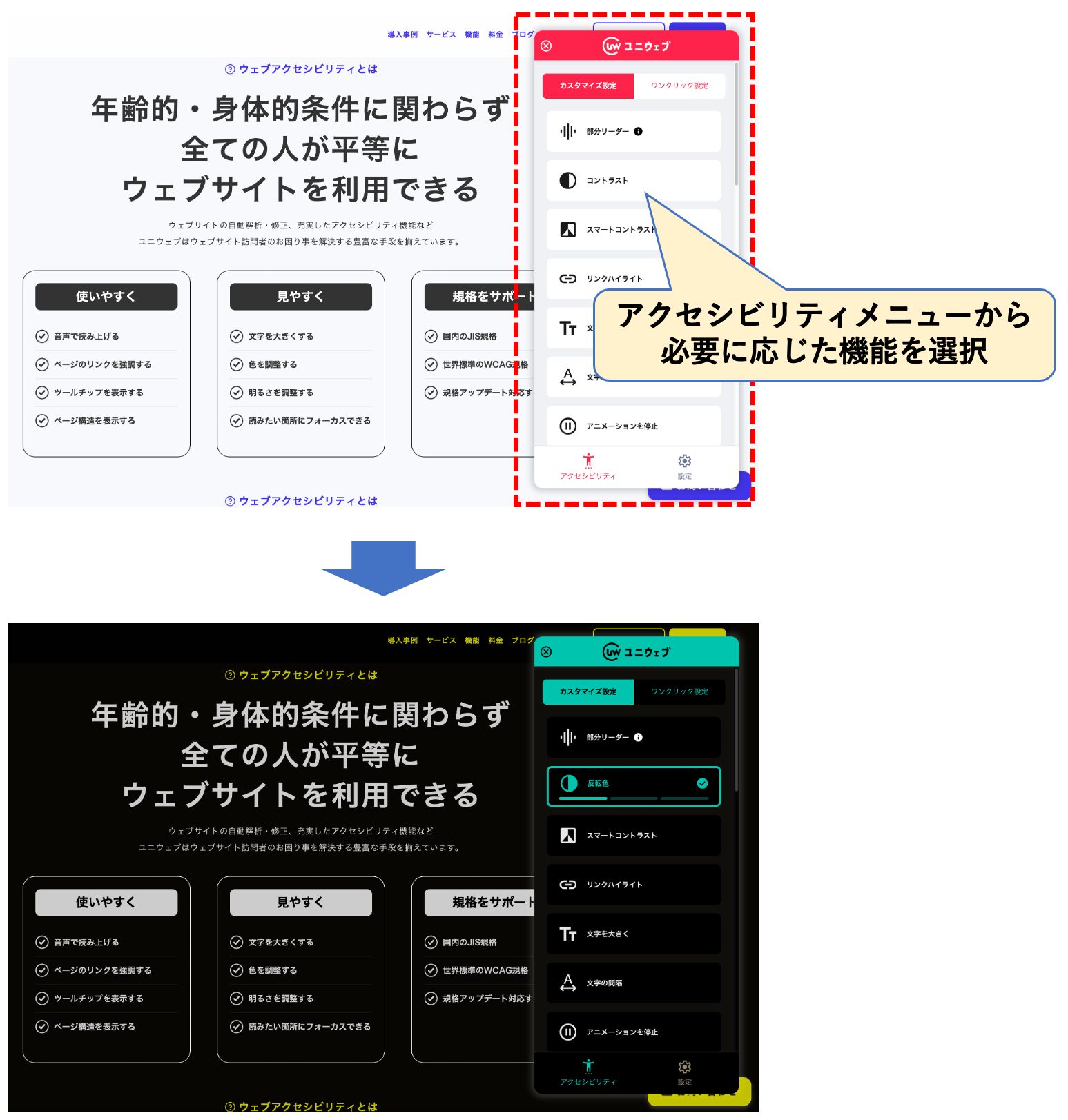
The "Multilingual AI Translation" function translates the text of the website you are browsing by simply selecting the desired language from the accessibility menu.
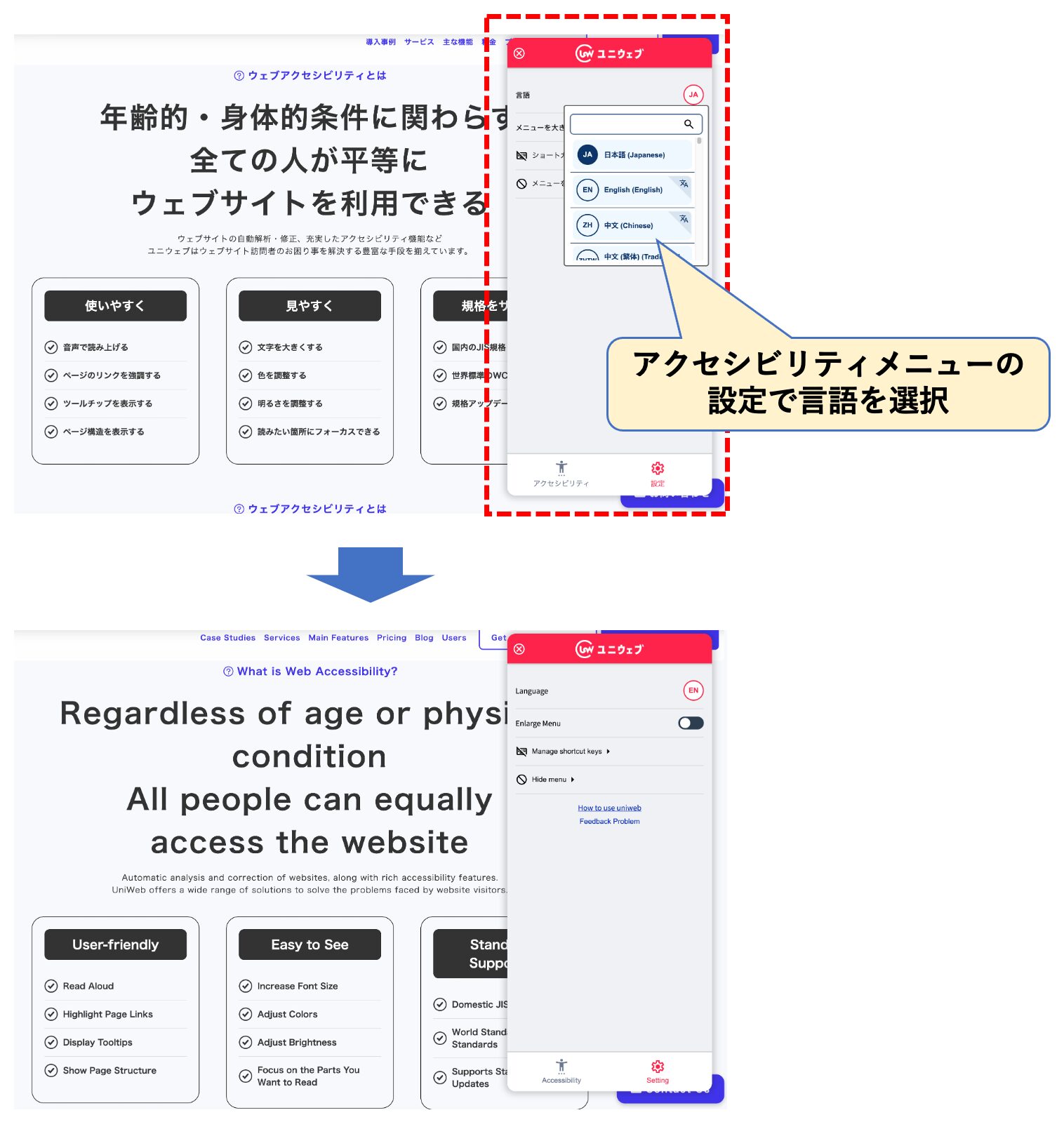
'UniWeb' isIntuitive UI and rich functions for diverse usersto incorporate "barrier-free" and "universal design" into all websites to simultaneously achieve "consideration for specific needs" and "comfortable design for all users".
UniWeb is the best option if we aim to "create a society that is easy for everyone to use," not only in physical space but also in the digital world.
Conclusion
In this article, we have explained both by comparing barrier-free and universal design, in terms of "creating a society that is easy for everyone to live in,Barrier-free and universal design share common objectives, and their true value is demonstrated when they are combined, rather than when they stand alone.
Aiming for a design that is easy for everyone to use, while not forgetting to consider specific needs, is a viewpoint that will lead to a more diverse society.
In addition, as society and technology evolve, the principles of barrier-free and universal design are increasingly required not only in physical spaces but also in digital spaces.
We hope that the concepts of barrier-free and universal design will be useful in your future efforts and designs to achieve a society that is sustainable and leaves no one behind.
Furthermore,The following articles provide more detailed information on barrier-free and universal design.Please take a look at this article as well as this article.
Related Articles:Thorough explanation of 13 specific examples to deepen understanding of "barrier-free".、Explanation and examples of the "7 principles" for understanding universal design
-
Contact Us
-
Request Info
-
Free Trial
-
Partner System

